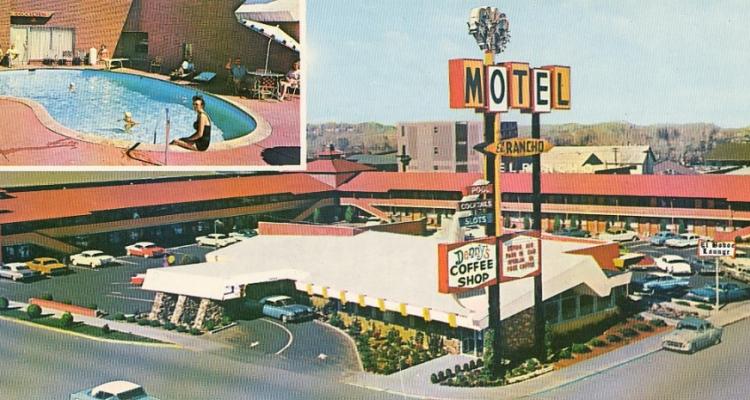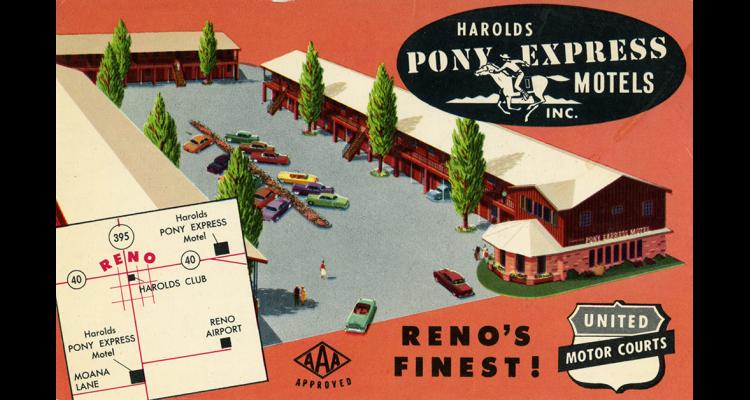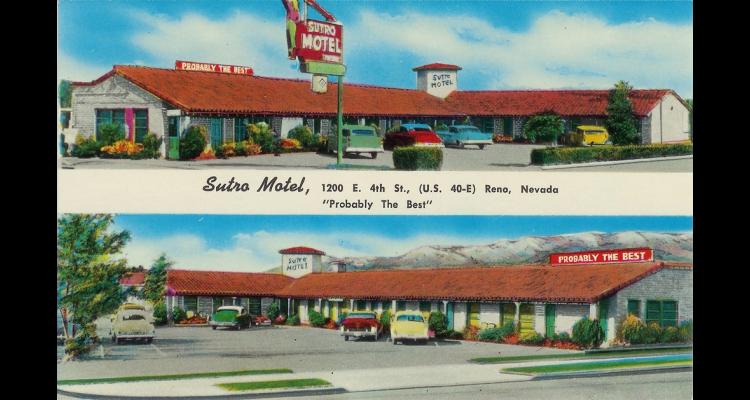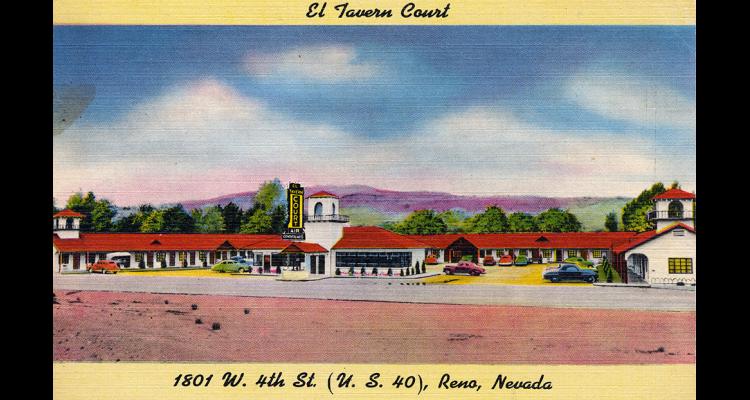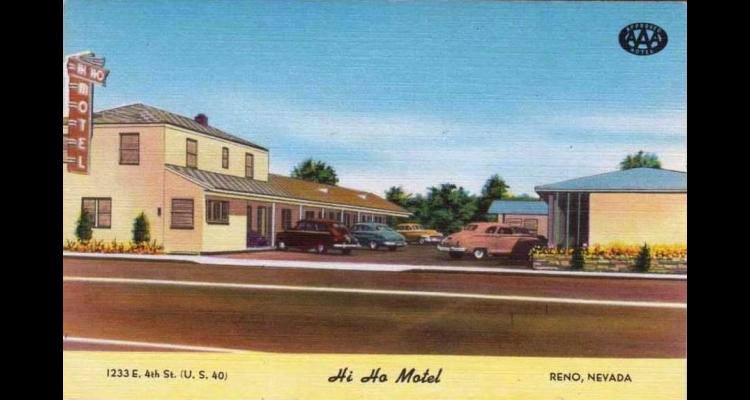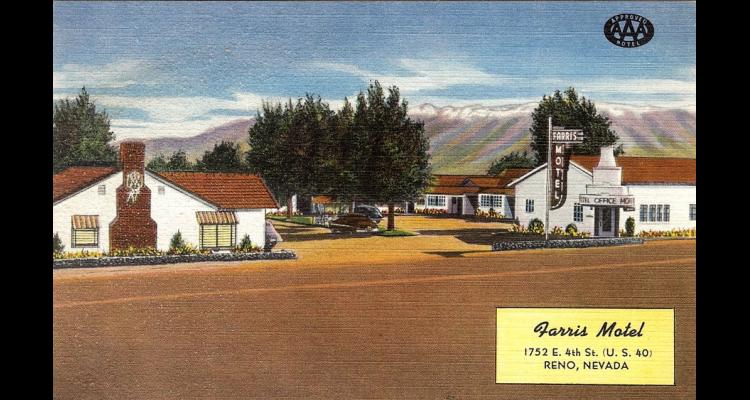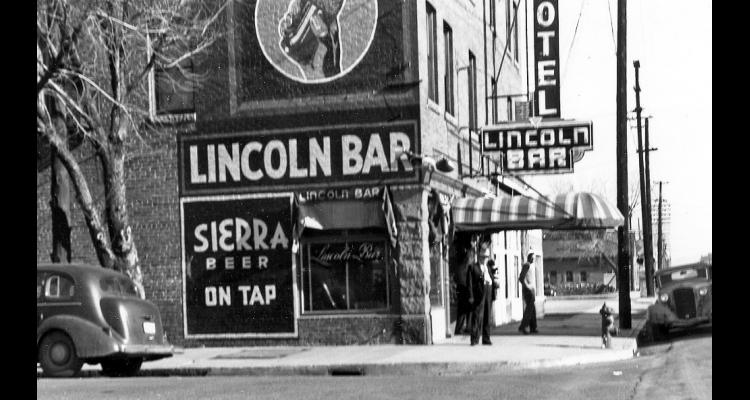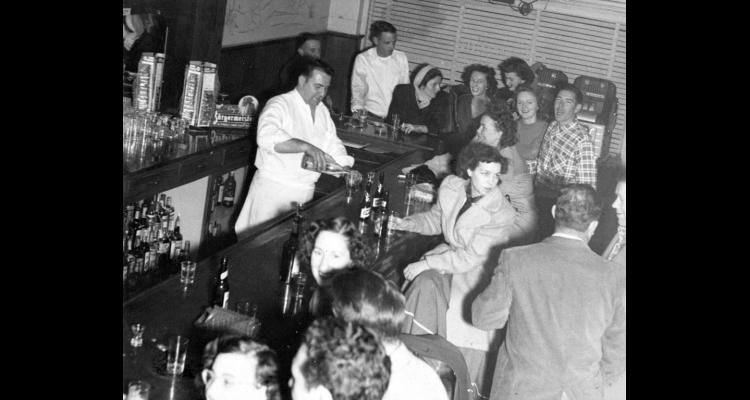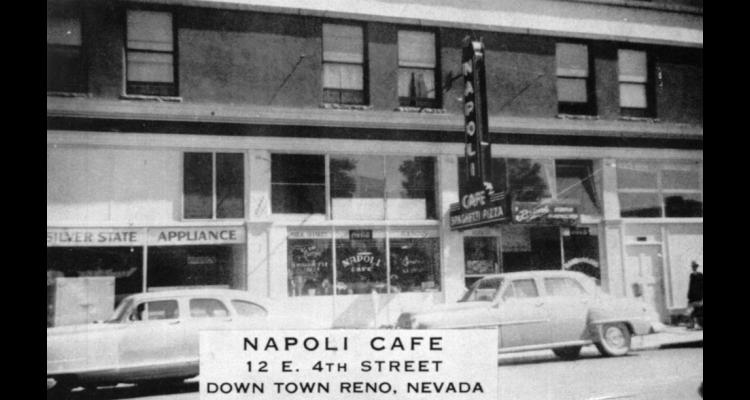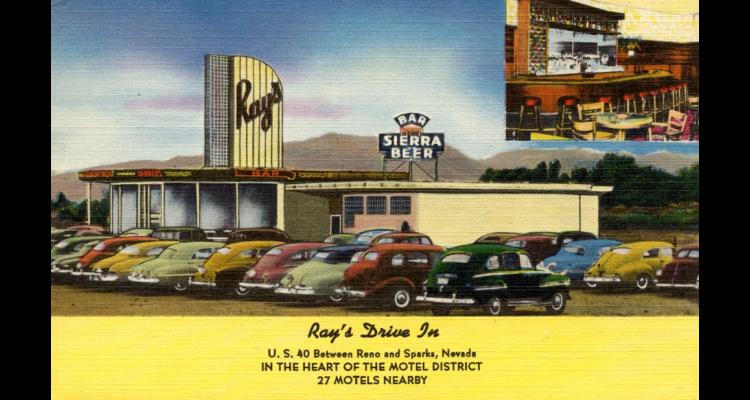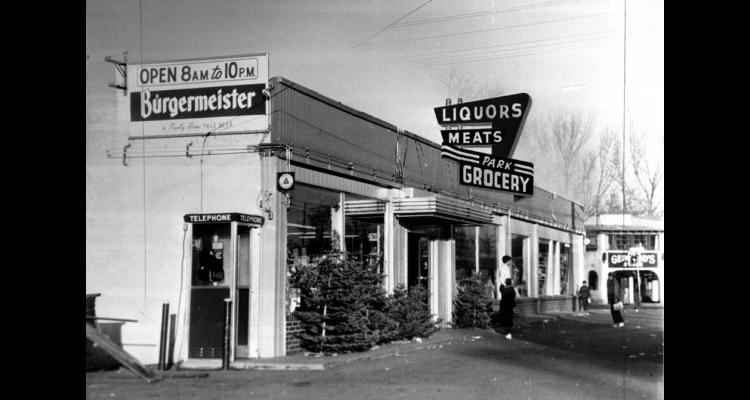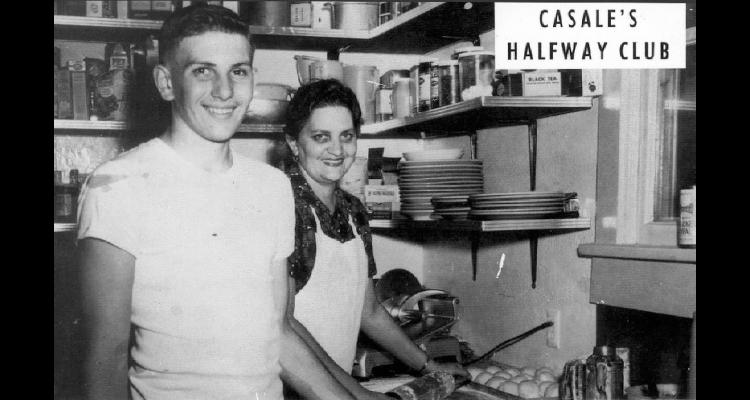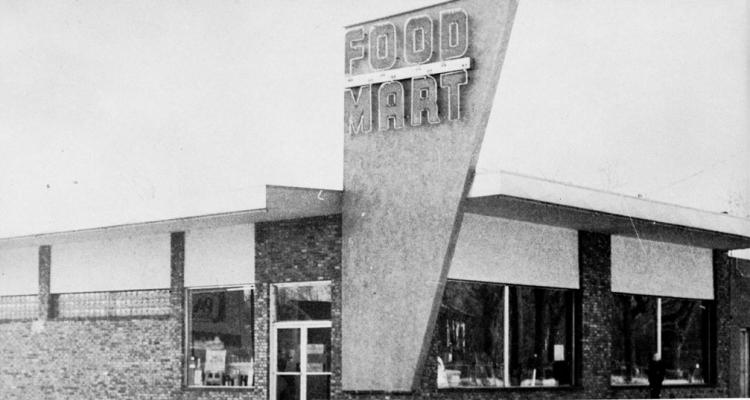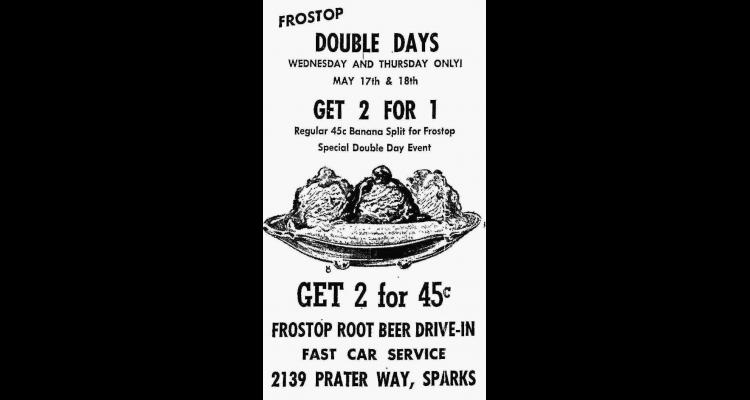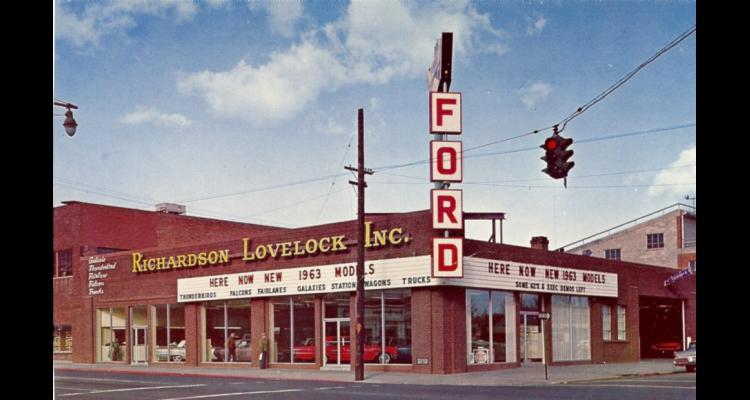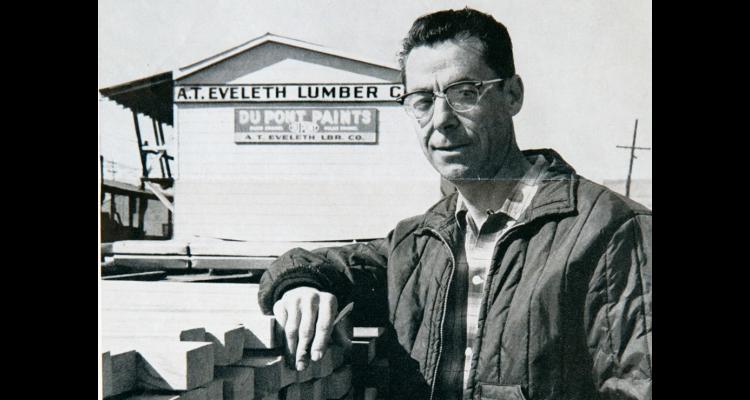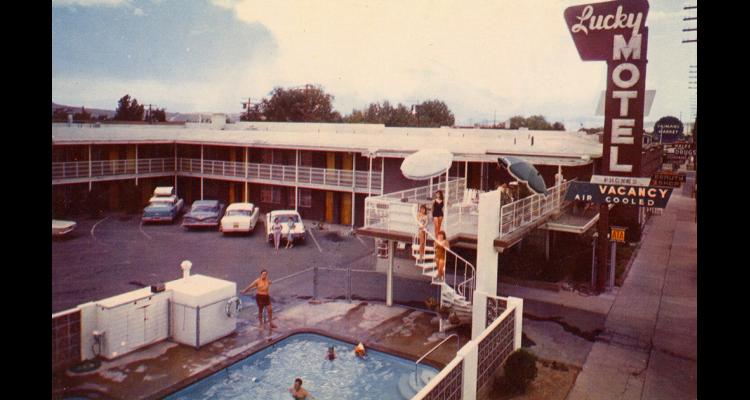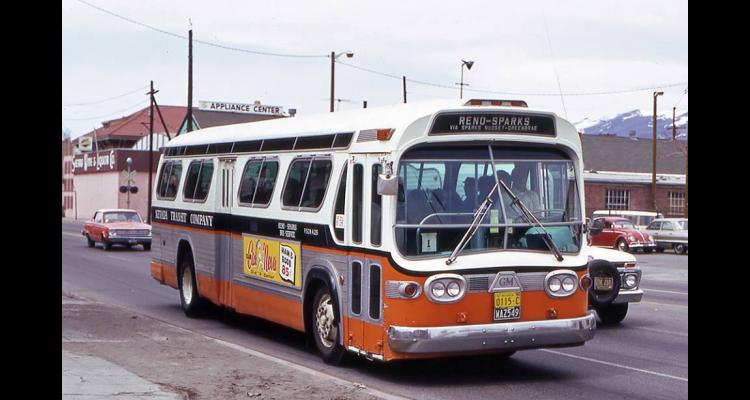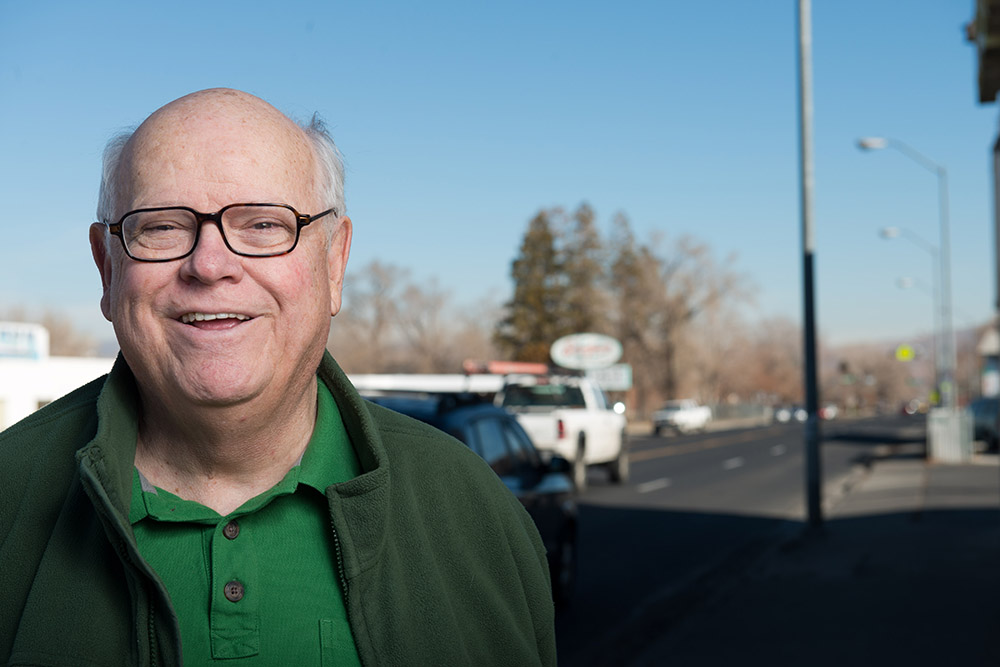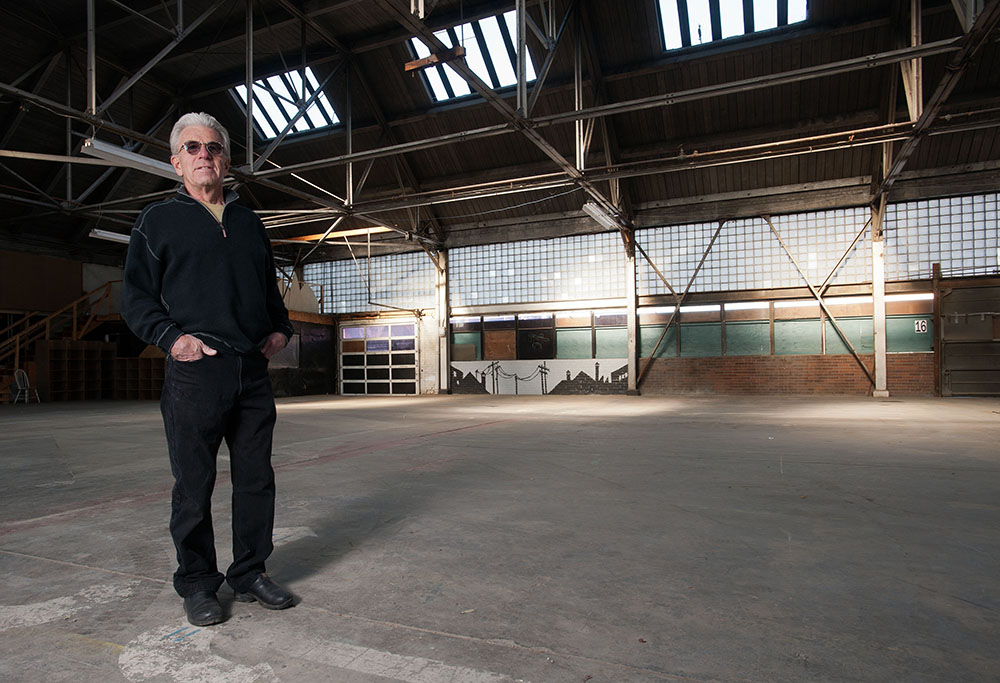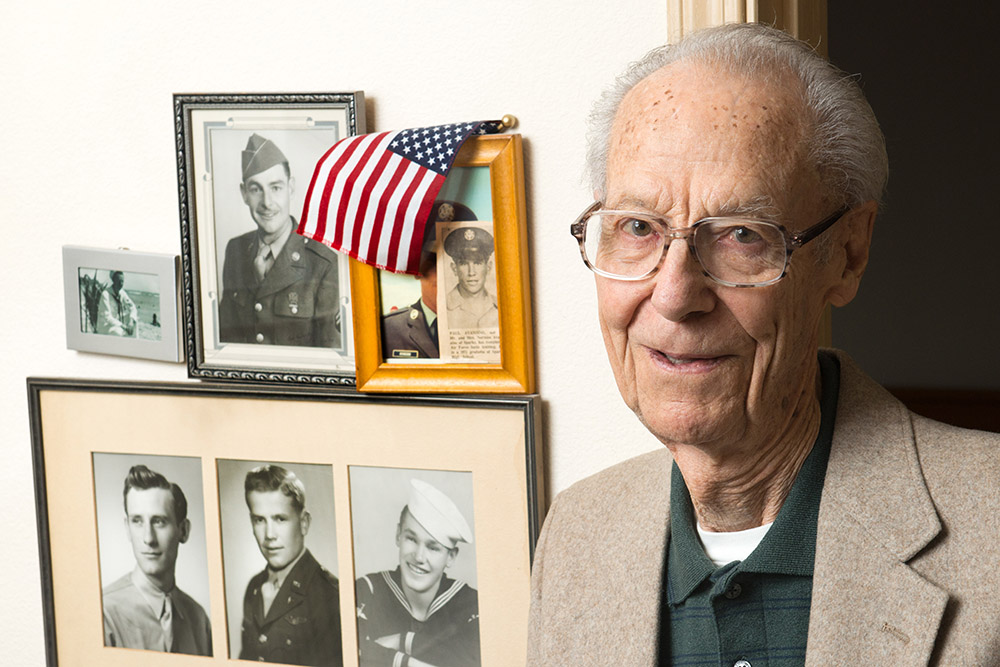Prater Way became a thriving commercial corridor, while 4th Street remained central to tourism and other businesses.
The postwar years brought a general sense of optimism to a nation battered by the hardships of World War II. Americans took the road in unprecedented numbers, to travel, drive-up, drive-in, or just cruise. Aided by federal loans, millions of young families purchased their first homes, many in hastily constructed new subdivisions.
Both Reno and Sparks underwent monumental changes in these decades. The escalation of Reno’s casino industry prompted growth in both cities, as new state taxes on gambling operations began to generate substantial revenues. Reno entered what many considered its golden era of gaming with the opening of Harrah’s Club in 1946 and the Mapes Hotel in 1947, plus major expansions to the Riverside Hotel and Harolds Club.
The city of Sparks experienced its own transformation in this era. Developers Weichmann and Probasco began in the late 1940s to construct new housing to the north and east of Sparks’ oldest neighborhoods. In 1956, the Southern Pacific Railroad’s conversion from steam to diesel rendered its existing maintenance facilities in Sparks obsolete, shutting down the town’s founding industry. And in 1955, Dick Graves opened the Nugget, a small coffee shop, on the north side of B Street (Victorian Avenue).
Family-Friendly Motels and Dazzling Neon
In the years following World War II, rates of car ownership soared, wages and leisure time increased, and the middle-class family road trip became an American tradition. Motels grew larger and more elaborate, adding air conditioning, swimming pools, in-room radios, and later, televisions. From coast to coast, the landscape glowed with colorful neon signs jostling for the attention of the traveling public.
Not surprisingly, the lucrative motel industry attracted many new investors to the 4th Street-Prater Way corridor, where an average day in 1957 saw 20,000 trips between Reno and Sparks. Although a few modest accommodations including the Park Motel and Poplars Motel remained on Prater Way, most lodgings were concentrated west of Sparks. On the city’s western edge, Harolds Club patriarch Raymond I. “Pappy” Smith purchased Cremer’s Motel, thoroughly renovated the property, and reopened it in 1952 as Harolds Pony Express Motel. Within a few years, it became the Pony Express Lodge, advertised in spectacular fashion by the area’s largest neon sign, which towered over the “Y.”
Also affiliated for a time with Harolds Club was the L-shaped El Rancho Motel No. 2, opened in 1954 by slot machine distributor Pete Cladianos, Sr. on the former site of the Nevada Packing Company. Seven years later, Cladianos opened the area’s first Denny’s Coffee Shop, along with a cocktail lounge and lobby, in a small building on the motel’s street side. From east to west, neon beckoned. The Farris Motel, with its distinctive stacked cake-like entrance tower, grew out of a modest auto camp opened in the 1920s. Nearby, the Star Auto Court became the Star Motel, and beginning in 1951, the Sutro Motel straddled both sides of Sutro Street, flaunting its charming slogan, “Probably the Best.” The Lucky Motel, the Hi Ho Motel, the Rest Well, Everybody’s Inn, the Sandman, the El Tavern Court, the Silver State Lodge—all these and more flourished, bolstered by gambling, proximity to Lake Tahoe, and the continuing divorce trade, which prospered through the 1960s. The growing wedding business attracted entrepreneurs like minister George Flint, who opened the picturesque Chapel of the Bells on West 4th Street in 1961.
Prater Way Becomes “The Main Street of Sparks”
Little had changed on Prater Way since 1934, when the route of U.S. 40 shifted from Prater to B Street (Victorian Avenue). But with the closure of the Southern Pacific maintenance shops and the growth of new subdivisions on former ranch lands to the north and east, Prater Way became prime territory for commercial development.
The opening of a new Sparks High School building in 1953, just a block north of Prater Way on 15th Street, immediately turned the area into a teenage haven. With Robert H. Mitchell Elementary right around the corner, the neighborhood surged with family-friendly eateries, including the Midget Kitchen, A&W Root Beer, and Dairy Queen. Further west, drive-ins on or near Prater Way included the Frostop, Ray’s Drive-In, Cal’s Drive-In, the Chuck Wagon, and the El Rancho Drive-In movie theater. Kids bought candy and soft drinks at the old Cave Grocery, later renamed Wanda’s, and at the Park Grocery, opened by the Rineharts, owners of the adjacent Park Motel.
As B Street became less central, several of its longtime businesses moved to Prater Way. Sparks Frozen Foods, later known as the Blue Ribbon Meat Company, moved next door to Gepford’s Used Furniture, and in 1957, Brannin’s Radio and TV moved into a new building near the Pony Express Lodge.
Still, nothing matched the excitement accompanying the grand opening of Sparks’ first modern supermarket, the Food Mart, just across from Deer Park, in January 1957. With parking space for 58 cars, the new market incorporated the latest innovations including a 40-foot long self-service meat counter. The adjacent Ideal Shopping Center opened the same month, with eight connected storefronts housing Dick Rock’s Ideal Drugs, the Ideal Beauty Salon, and six other businesses. A five-unit addition in 1959 created the complex’s final L-shape. By that time, a Safeway grocery store had been constructed just one block away.
Through the 1960s, Prater Way was widely known as “the Main Street of Sparks.” As housing continued to develop eastward, East Prater Way became home to the new Dilworth Junior High School and Sparks City Hall. Trailer parks, many established during the housing shortage of the immediate postwar era, also dotted the thoroughfare, offering affordable housing options even after the crisis had passed.
Chain Stores and National Brands
The Prater Way Safeway was a harbinger of things to come. In the 1960s, the arrival of chain supermarkets, with their broader selection, longer hours, and convenient parking, sounded the death knell for most of the area’s family-owned markets. Akert Market, run by the parents of Ben Akert, operated on East 4th Street from 1945 to 1964, and was later torn down. Pinky’s Market, opened by the Pincolini brothers in 1946, also closed in 1964. On Prater Way, Wanda’s Grocery closed in the mid-1950s, while the newer and larger Park Grocery hung on until 1988.
Cultural shifts in production and distribution affected other industries along the corridor as well. After processing and storing meat from local farms and ranches for decades, Nevada Packing closed in 1947. The rise of national beer brands like Budweiser put many local breweries out of business, including the Reno Brewing Company, which closed in 1957. Symbolic of the new economy, Peter and Thelma Barengo opened Sierra Wine and Liquors in the former Western Pacific Railroad depot in 1959 and constructed a 15,000 square foot concrete warehouse next door to house their inventory.
Other industries did not change as rapidly, however, and construction businesses like Martin Iron Works, Alpine Glass, Reno Forklift, and Eveleth Lumber continued to prosper. So, too, did auto dealerships, equipment retailers, and popular bars and restaurants that had gained a loyal following. One new addition to the scene, soon to gain its own following, was Louis’ Basque Corner, opening on the ground floor of the Hotel Richelieu in 1967.
Urban Renewal and the Interstate
As Prater Way become more central to residential life, the opposite was true for East 4th Street. Extending east from Wells Avenue, the Morrill-Smith Addition, Leete’s Syndicate Addition, and other early housing tracts had developed through the decades into a sprawling residential neighborhood extending northward to 9th Street and beyond. By the 1950s, the area had become a diverse community of property owners and tenants, with a high concentration of Italian families and many African American residents. Most of their children attended Orvis Ring Elementary School on Evans Avenue.
In 1957, Reno’s newly-formed Urban Renewal Agency declared approximately 400 acres in northeast Reno, including these neighborhoods, to be a “slum and blight area suitable for urban renewal.” Later reduced in size, the targeted area stretched from the alley just north of East 4th Street to East 6th street, and from Wells Avenue eastward six or seven blocks to Sage Street. Although fought in court by a coalition of area residents, the project ultimately displaced more than 200 families, whose homes were demolished (with compensation). The entire area was rezoned for commerce and industry, and offered for sale in 1966 as the “Downtown Service Center,” advertised for its convenient location just south of the new interstate, then under construction.
Enabled by the Interstate and Defense Highways Act of 1956, Interstate 80 was approved to run along the route of Reno’s 7th Street and A Street in Sparks, although various constituencies had pushed for alternate routes, ranging from Commercial Row to Court Street to a bypass route far north of downtown. Its construction tore up the old Coney Island neighborhood, placing an exit ramp in the backyard of the Coney Island Bar and forcing the demolition in 1966 of the Copenhagen Bar, which reopened several blocks down the street later that year. To the west, construction of the massive four-lane Wells Avenue overpass in 1967 eliminated the traffic jams that had plagued the intersection of Wells Avenue and 4th Street. On May 22, 1974, the final section of Interstate 80 through Reno and Sparks opened to traffic. The corridor would never be the same.
